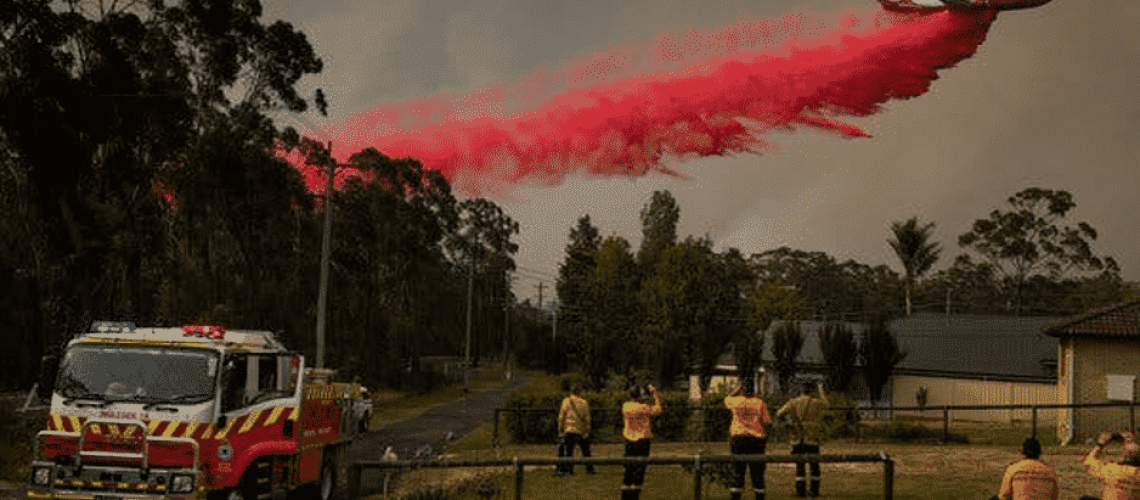What is surprising with the huge national outcry over these fires is not the federal governments reaction but the lack of any response by our own state government to the looming political threat fires now pose. The political beating that the Morrison government has suffered should be a wake up call to all governments, the community expects our leaders to do far more to protect lives, property and the environment from the risk of bushfire.
Unfortunately as former WA fire boss Wayne Gregson pointed out in wednesday’s West Australian, it is highly predictable that following the inevitable post fire enquiry that these latest fires will generate the final recommendations will once again call for more resources to support our fire management efforts. But just as predictable is the recommendations will inevitably be watered down, modified and underfunded over time for the sake of political expediency and cost.
In Western Australia’s case we don’t need to wait for a commonwealth royal commission to tell us we need more resources targeted to our bush fire brigades, all the State government needs to do is pull out the Furgurson report from the 2016 Esperance and 2015 Yarloop Fires which saw the tragic loss of six lives and revisit its recommendations.
At the time of these fires the Barnett Government was stung politically by the criticism around the lack of respect and appreciation government agencies had for the local wisdom and expertise of volunteer bush fire brigades. This was the core of the enquiry’s recommendation to follow almost every other Australian State and create a separate Country Fire Service that understood the unique culture and methodologies of those who regularly work with the land and fight bush fires.
Critics of the handling of those two bushfires claimed that too much of the state’s funding and focus was being directed towards a highly unionised and very expensive city-centric service that is designed to tackle the likes of the 1974 movie Towering Inferno rather than the far more common (and economically devastating) bush and farmland fires.
The Opposition leader at the time, Mark McGowan made much political capital out of the fires and supported the establishment of an independent rural fire service which was the penultimate recommendation of the Ferguson report. But as Wayne Gregson has called out political expediency reigns supreme when it comes time to write the cheque and drive the changes necessary to protect the community from the growing risk of fire.
In the case of the Furgurson report, following its release the Barnett government sat on it for nine months avoiding any hard decisions, then the April state election came, the summer fires went out, the rains came, the government changed and the sense of urgency disappeared. During this whole time the United Firefighters Union and the relevant government departments was quietly working to ensure that any change was minimal and any new money went into the bureaucracy.
In the end the McGowan government announced in 2018 it was establishing a Rural Fire Arm within the Department of Fire and Emergency Services (DFES), a bureaucracy within a bureaucracy with an increase in the ESL to fund a so-called Centre of Excellence in the marginal ALP seats of Murray-Wellington and Collie. A political outcome if you ever saw one which will inevitably come back to burn this state government.
As the Minster and Premier well know our fire fighting resources are too heavily weighted towards the expensive, smartly kitted out, elite firefighters in the city and not enough towards the 15 x larger volunteer firefighting force available to fight in the bush. Allocating just 5% of the $400m Emergency Services Levy to our Bush Fire Volunteers after what we have seen happen in the Eastern States is now a political recipe for another deadly fire disaster in Western Australia.
The reality is there will be another major bush fire in regional Western Australia, people will die and the government deserves to get blamed for not heeding the lessons from not just the Yarloop and Esperance fires but from the 50 plus various Royal Commissions and Government enquires that have been undertaken around Australia in the last 50 years.
More resources on the ground, more mitigation via controlled burns, more local control, more effort in attracting and retaining volunteers, better early warning, better coodination, bigger equipment, less building in high risk areas, new fire retardant technology, better techniques in identifying arsonists, it’s not hard to work out what’s needed is all in the existing reports.
With the next election due after next year’s fires season the state government would be smart to deliver the Ferguson Inquiry’s recommendation to establish an independent rural fire service before the next long hot summer. As long as the current effort extends only to creating more bureaucracy inside of DFES the politicians cannot escape wearing the political pain of future rural fire death and destruction.
As to the governments claims that a Rural Fire Service would come with a massive cost, the numbers quoted of up to $80m need careful review as they sound as if they have been plucked out of the air by the unions as a way of warding off the establishment of a competing service. A new agency should be on the drawing board as a serious option one that non only manages bush fires but takes over responsibility for land management and hazard reduction from ‘conservationist’ environmental agencies to provide a year round fire defence service.
Efficiencies would be gained by pruning down the size of the Departments of Fire and Emergency Services and the Department of Parks and Wildlife to concentrate all our bush fire management skills in one new agency. The Economic Regulatory Authority should be instructed to have a close look at what it would really cost and what benefits it would bring the state.
When the state government is raising $400m for fire and emergency services from rate payers but only allocating $33m to volunteers there is something wrong with the allocation of funds. The numbers quoted by the government against a rural fire service are about as absurd as some of the employment conditions that the unionised firies have managed to extract for themselves. Its time to go back to the drawing board on both.
A more likely administration figure of a rural fire service to manage volunteers is around 2% of the ESL or $8m pa enough to get a WA Rural Fire Service up and running along with a properly funded Bushfires Volunteers Association to represent and help attract more volunteers. Let’s face it all those volunteers who are on the front line are paying the ESL in one form or another so it would make sense for them to have a greater say in how the money is allocated.
The next thing the government should do is allocate 5% ($20m) of the ESl to a competitive bucket of funds that is open and transparent that allows communities to prioritise what rural equipment they want and not be restricted to just big $400,000 fire trucks which are often over engineered for what they are needed for. Spending that sort of money on a bulldozer, a low loader, a grader, and a 30,000 lt tanker brought cheap from the miners and parked up ready to roll would be far more valuable than yet another specialist truck.
Another 5% should be allocated to rural fire brigades to be contracted by the new Rural Fire Service to pay them to undertake controlled cool burns in high risk areas around their communities. They could mobilise a gray nomad army on contract to support remote cool season burns and mop up in the days and weeks after the big blaze has left smouldering stumps that need monitoring and extinguishing.
And finally there needs to be a long term engaging advertising campaign to encourage the me too millennial generation to get off their phones and sign up to their local volunteer emergency service rather than sending ‘likes’ to the facebook posts of yet another celebrity that’s demanding the Australian government put out the coal fire power stations as their way of putting out bush fires.
We have enough money in the $400m bucket we just don’t allocate it property. If we just add to the $33m existing funding for volunteer emergency services an additional $8m for the Rural Fire Service administration plus $20m for Community Equipment plus $20m for Contract Controlled Burns and volunteer support we get a figure totalling $80m for a dedicated new agency. If we add to it the existing bush fire management and resources from DFES and DPAW we will be fighting fit for around $150m pa. We know this government is not shy to structurally reform government departments, if there ever was a case for an overhaul of how we manage bushfires in WA the eastern states fires are the signal to stop watching and start acting. If the government does not pick up on this policy response to a major community issue the opposition should.











